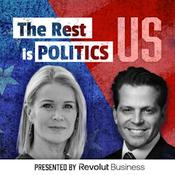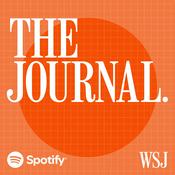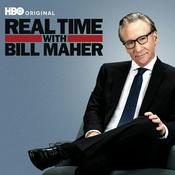Episodios disponibles
5 de 251
- How Timor-Leste is fighting back against Asia’s scamming gangsOecusse, a rugged, remote district of Timor-Leste in south-east Asia, is usually a pretty sleepy place. But in August, Oecusse was rocked by a large police raid on a suspected scam centre, later linked by a UN report to organised crime networks running scamming operations across south-east Asia. And then in early September, a Facebook post by one of Timor-Leste’s highest political officials made some explosive allegations about a murky criminal underworld trying to get a foothold in the country.In this episode, we speak to Michael Rose, an anthropologist and adjunct lecturer at the University of Adelaide who has lived and worked in Timor-Leste, about how Asia’s scamming gangs set their sights on Timor-Leste as their next frontier – and the movement to keep them out.This episode was written and produced by Katie Flood and Gemma Ware with assistance from Mend Mariwany. Mixing by Michelle Macklem and theme music by Neeta Sarl. Gemma Ware is the executive producer. Read the full credits for this episode and sign up here for a free daily newsletter from The Conversation.If you like the show, please consider donating to The Conversation, an independent, not-for-profit news organisation.Cambodia is vowing to ‘rid’ the country of scam compounds. But we’ve seen several still operating in the openListen to episode 1 of Scam Factories '‘It seemed like a good job at first’: how people are trafficked, trapped and forced to scam in Southeast Asia'Scam Factories: read the series on The ConversationOrganised crime may be infiltrating Timor-Leste’s government. One minister is sounding the alarmMentioned in this episode:The Making of an AutocratSearch "The Conversation Weekly" for our new series: The Making of an Autocrat. Is America watching its democracy unravel in real time? In The Making of an Autocrat from The Conversation, six of the world’s pre-eminant scholars reveal the recipe for authoritarian rule. From capturing a party, to controlling the military, Donald Trump is borrowing from the playbook of strongmen thoughout history. This is the story of how democracies falter — and what might happen next.--------25:57
- Why the US is fixated on South Africa’s white AfrikanersDonald Trump’s fixation on South Africa’s white Afrikaner minority has become a central plank of US refugee policy, with their applications now given priority under a new refugee system.This preoccupation by some Americans with white Afrikaners has a long history dating back to the publication of a large sociological study focusing on poor white Afrikaners in the 1930s.In this episode, we speak to Carolyn Holmes, an assistant professor of political science at the University of Tennessee, Knoxville, to trace the history of the links between white nationalists in the US and South Africa.This episode was produced by Gemma Ware, Mend Mariwany and Katie Flood. Mixing by Michelle Macklem and theme music by Neeta Sarl. Read the full credits for this episode and sign up here for a free daily newsletter from The Conversation.If you like the show, please consider donating to The Conversation, an independent, not-for-profit news organisation.Trump and South Africa: what is white victimhood, and how is it linked to white supremacy?The South African apartheid movement’s close relationship with the American right – then and nowTrump’s white genocide claims about South Africa have deep roots in American historyDonald Trump, white victimhood and the South African far-rightMentioned in this episode:The Making of an AutocratSearch "The Conversation Weekly" for our new series: The Making of an Autocrat. Is America watching its democracy unravel in real time? In The Making of an Autocrat from The Conversation, six of the world’s pre-eminant scholars reveal the recipe for authoritarian rule. From capturing a party, to controlling the military, Donald Trump is borrowing from the playbook of strongmen thoughout history. This is the story of how democracies falter — and what might happen next.--------31:00
- The 40 scientists who decide which flu shot you'll getTwice a year, 40 scientists gather together for five days to decide what strains of influenza to vaccinate against for the next flu season. It takes around six months to prepare the vaccine – which usually includes protection against three different strains of flu. Europe and the US are heading into a flu season that some are warning could be particularly severe this winter. While even as summer approaches in Australia, the country is still registering high numbers of cases after a record-breaking flu season earlier in the year. So how does the process of deciding on a flu vaccine each year actually work? And does what happens in the southern hemisphere influence the way the virus circulates in the northern hemisphere? In this episode, we speak to Ian Barr, deputy director for the WHO Collaborating Centre for Reference and Research on Influenza, based at the Peter Doherty Institute for Infection and Immunity, part of the University of Melbourne. Barr is one of those 40 scientists who attend the meetings to decide what strains to focus vaccination efforts on. This episode was produced by Mend Mariwany, Katie Flood and Gemma Ware. Mixing by Michelle Macklem and theme music by Neeta Sarl. Read the full credits for this episode and sign up here for a free daily newsletter from The Conversation.If you like the show, please consider donating to The Conversation, an independent, not-for-profit news organisation.First human bird-flu death from H5N5 – what you need to knowFlu season has arrived – and so have updated flu vaccinesFlu season has started early in the UK – here’s what might be going onMentioned in this episode:The Making of an AutocratSearch "The Conversation Weekly" for our new series: The Making of an Autocrat. Is America watching its democracy unravel in real time? In The Making of an Autocrat from The Conversation, six of the world’s pre-eminant scholars reveal the recipe for authoritarian rule. From capturing a party, to controlling the military, Donald Trump is borrowing from the playbook of strongmen thoughout history. This is the story of how democracies falter — and what might happen next.--------27:23
- How China cleaned up its air pollutionAs Pakistanis and Indians struggle with hazardous air quality, in Beijing – a city once notorious for its smog – the air quality is currently rated as good.Ahead of the 2008 Beijing Olympics, the Chinese government was so concerned about pollution that it introduced temporary restrictions on cars, shut down factories and work on some construction sites. It would take a few more years before the Chinese government implemented a clean air action plan in 2013. Since then, China has achieved a dramatic improvement in its air quality.In this episode, we speak to Laura Wilcox, a professor at the National Centre for Atmospheric Science at the University of Reading in the UK, to understand how China managed to clean up its air pollution. But Wilcox’s recent research uncovered some unintended consequences from this cleaner air for the global climate: the pollution was actually helping to cool the atmosphere and by taking it away, it may have accelerated global warming.This episode was produced by Mend Mariwany, Katie Flood and Gemma Ware. Mixing by Michelle Macklem and theme music by Neeta Sarl. Read the full credits for this episode and sign up here for a free daily newsletter from The Conversation.If you like the show, please consider donating to The Conversation, an independent, not-for-profit news organisation.Solar geoengineering: the risks and distractions of trying to reflect sunlight to cool the Earth – podcastDelhi: how weather patterns and faraway mountains made this the world’s most polluted megacityCleaner air in east Asia may have driven recent acceleration in global warming, our new study indicatesMentioned in this episode:The Making of an AutocratSearch "The Conversation Weekly" for our new series: The Making of an Autocrat. Is America watching its democracy unravel in real time? In The Making of an Autocrat from The Conversation, six of the world’s pre-eminant scholars reveal the recipe for authoritarian rule. From capturing a party, to controlling the military, Donald Trump is borrowing from the playbook of strongmen thoughout history. This is the story of how democracies falter — and what might happen next.--------24:32
- How early climate models got global warming rightSince the 1960s, scientists have been developing and honing models to understand how the earth’s climate is changing. One such pioneer of early climate modelling is Syukuro Manabe, who won the Nobel prize in physics in 2021 for his work laying the foundation for our current understanding of how carbon dioxide affects global temperatures. A seminal paper he co-published in 1967 was voted the most influential climate science paper of all time.In this episode, we speak to Nadir Jeevanjee, a researcher at the same lab in the National Oceanic and Atmospheric Administration where Manabe once worked, to look at the history of these early climate models, and how many of their major predictions have stood the test of time. And yet, as climate negotiators gather in the Brazilian city of Belem on the edge of the Amazon for the Cop30 climate summit, the data sources that climate scientists around the world rely on to monitor and model the climate are under threat from funding cuts by the Trump administration.This episode was produced by Mend Mariwany, Katie Flood and Gemma Ware. Mixing by Eleanor Brezzi and theme music by Neeta Sarl. Read the full credits for this episode and sign up here for a free daily newsletter from The Conversation.If you like the show, please consider donating to The Conversation, an independent, not-for-profit news organisation.How to find climate data and science the Trump administration doesn’t want you to seeThe most influential climate science paper of all time5 forecasts early climate models got right – the evidence is all around you--------24:38
Más podcasts de Noticias
Podcasts a la moda de Noticias
Acerca de The Conversation Weekly
A show for curious minds, from The Conversation. Each week, host Gemma Ware speaks to an academic expert about a topic in the news to understand how we got here.
Sitio web del podcastEscucha The Conversation Weekly, Presunto y muchos más podcasts de todo el mundo con la aplicación de radio.net

Descarga la app gratuita: radio.net
- Añadir radios y podcasts a favoritos
- Transmisión por Wi-Fi y Bluetooth
- Carplay & Android Auto compatible
- Muchas otras funciones de la app
Descarga la app gratuita: radio.net
- Añadir radios y podcasts a favoritos
- Transmisión por Wi-Fi y Bluetooth
- Carplay & Android Auto compatible
- Muchas otras funciones de la app


The Conversation Weekly
Escanea el código,
Descarga la app,
Escucha.
Descarga la app,
Escucha.

































